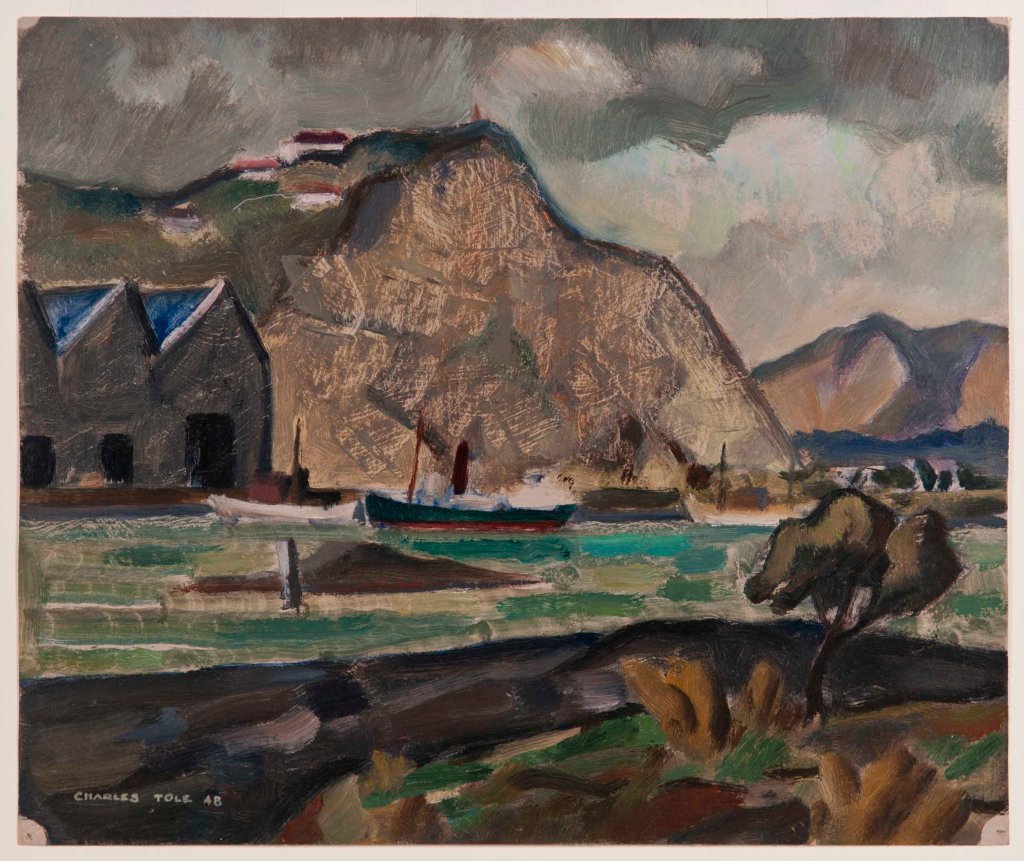
The Channel, 1948 by Charles Tole. Collection of Hawke’s Bay Museums Trust, Ruawharo Tā-ū-rangi
When you work with an art collection as rich and varied as the Hawke’s Bay’s Museums Trust collection, you are bound to fall a bit harder for one or two of the more exceptional works in it.
Triggered by current events or issues, exhibitions and displays come together by identifying various themes that seem relevant to visitors to the museum.
Every now and then though, it would be fun or just plain indulgent to show off some of the collection’s special works. Works that may have not have been shown because they don’t fit with themes of exhibitions planned. This painting, The Channel by Charles Tole is one of those works.
With its rapid brushwork and under painting showing through, the work is clearly a study or ‘drawing’ in paint. Showing Ahuriri port with Napier Hill in the background, there is probably something of the familiarity of the subject that is especially compelling for ‘Hawke’s Bayites’.
In 1948, Napier Hill is more sparsely populated and under the bluster of a cloudy sky, the whole scene seems more redolent than the customary idyllic scene of Napier on a sunlit day.
With old wooden schooners waiting patiently outside the woolstores, there may be more than a touch of nostalgia for times in Ahuriri that seemed less crowded with holidaymakers and not as fixated on entertainment busyness.
However, most interesting is Tole’s approach to painting and that is where his artistic focus is too. Tole fits into the school of painters that draw on Cubism, and who had a fascination with the conundrum of painting three-dimensional subjects on two-dimensional surfaces, such as canvas or in this case paper.
Cubism began in the first decade of the 20th century and had run its course by the late 1940s when this work was painted, surpassed by new movements such Surrealism and Expressionism. Some painters however, continued to work with Cubist ideas where everything is treated with respect to its dimensionality. Buildings, clouds and landforms all have the same focus on volume giving them a rather hefty feel.
Interesting too, is Tole’s portrayal of the landscape at a time when painting was developing a distinctively New Zealand style. It was honest depictions of rural life or small towns like this, which characterised New Zealand painting of the time. Unpeopled landscapes with motifs of colonial settlement painted with strong outlines and broad areas of flat colour were analogous with Tole’s peers.
Tole and contemporaries such as Doris Lusk and Rita Angus created perhaps the first colonial view of New Zealand that took the uniqueness of the country and its identity seriously.
Like Tole, Angus has a special connection to Hawke’s Bay, with a number of her works held in the Trust Collection. She is also currently the subject of a special exhibition at Te Papa; Rita Angus: New Zealand Modernist, Rita Angus that is on until 22 April this year.
The Rita Angus exhibition will be coming here in 2024 so we hope you’ll come along and see it, in the meantime you can take a look at another work by Tole; House With a Red Roof, 1946, online at MTG Hawke’s Bay:
https://collection.mtghawkesbay.com/objects/6082/the-house-with-the-red-roof
Published in the Hawke’s Bay Today newspaper 26th February 2022 and written by Toni MacKinnon, Curator Fine Arts at MTG Hawke’s Bay.

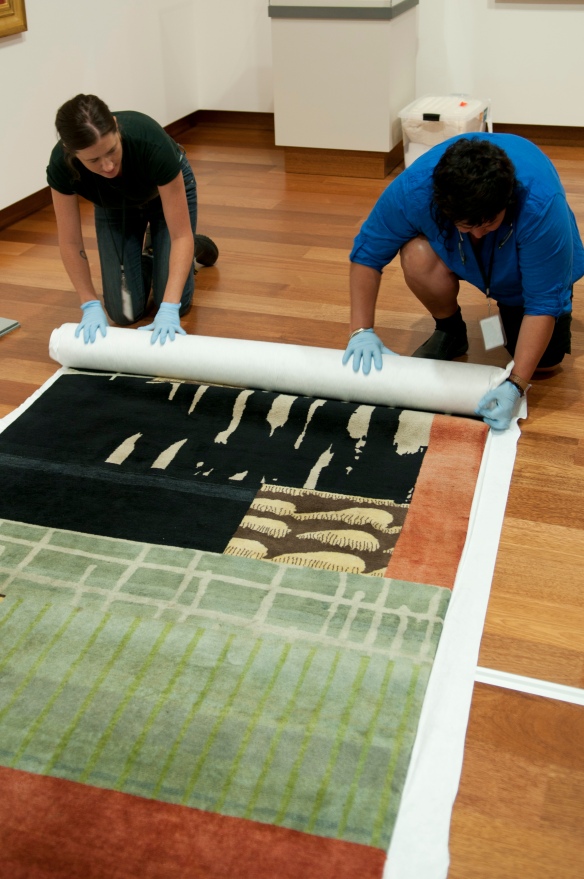
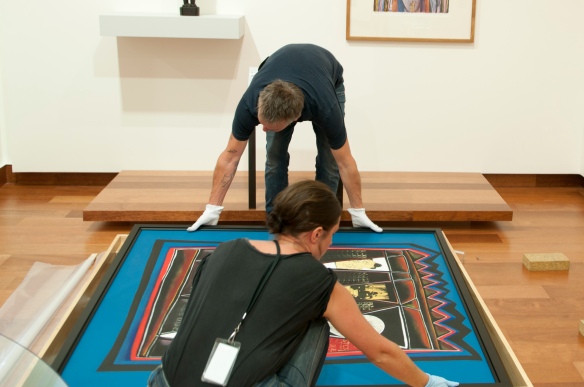
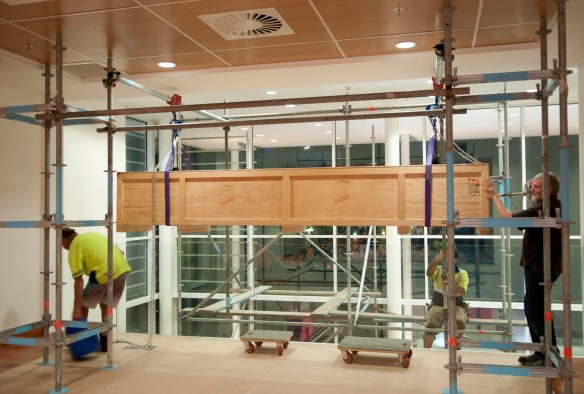
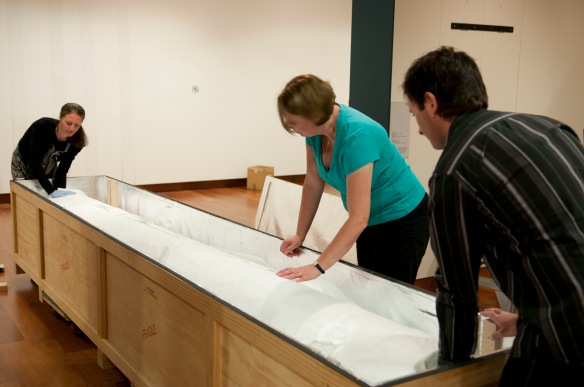
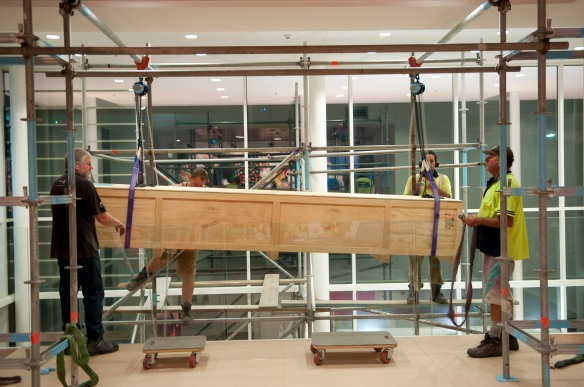 The crate is carefully hoisted back down over the balcony.
The crate is carefully hoisted back down over the balcony.